If you have to name one American painting, then this iconic work by one of the most renowned American artists in history probably comes up as one of the first.
This realistic painting has been featured in countless forms of media which certainly helped to instill this image into the minds of the people.
Let’s take a closer look at some of the most interesting facts about Nighthawks by Edward Hopper, the most famous work by the American Realist artist.
1. It was completed in one and a half months in the early 1940s
Edward Hopper (1882-1967) was born in Nyack, New York, a village just north of the outskirts of New York City. He spent his childhood years here and the house he grew up in has been transformed into the Edward Hopper House Art Center.
He visited Europe 3 times and was highly impressed by “The Night Watch” by Rembrandt van Rijn (1606-1669), a painting he had described as “the most wonderful thing he had ever seen.”
He was especially impressed by the realism integrated by the Baroque artist of the Dutch Golden Age, an element he tried to replicate in his works.
He struggled for many years to define his style and make a name for himself, but his persistence during the second decade of the 20th century was rewarded.
He completed Nighthawks on January 21, 1942, after working on it for about a month and a half.
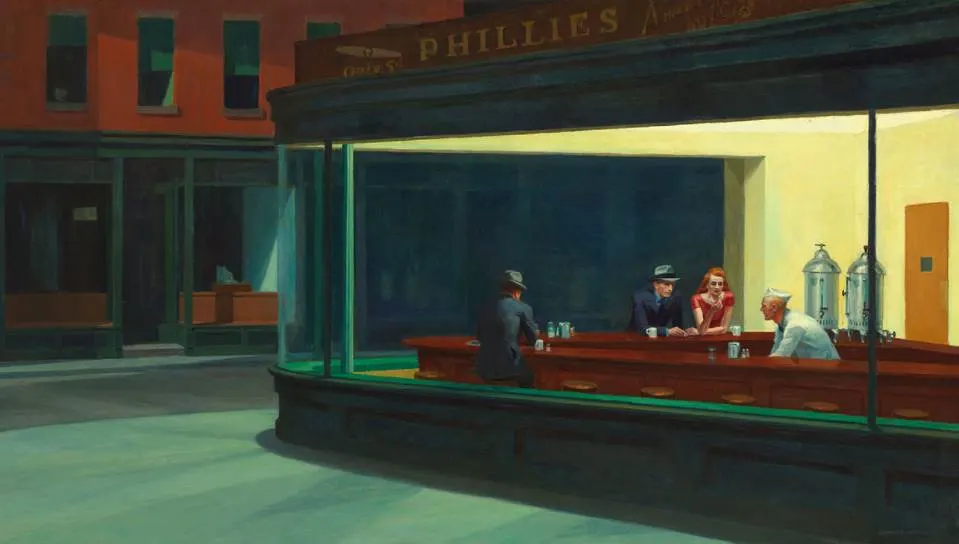
2. The name of the painting might be a reference to a physical characteristic
Hopper married his wife Josephine in 1924 and she played a major role in the artist’s career. She was a painter herself and frequently collaborated with her husband.

She also made detailed notes about all of the paintings that he completed, including Nighthawks. This note probably reveals where the original name of the painting came from:
Night + brilliant interior of cheap restaurant. Bright items: cherry wood counter + tops of surrounding stools; light on metal tanks at rear right; brilliant streak of jade green tiles 3/4 across canvas–at base of glass of window curving at corner. Light walls, dull yellow ocre [sic] door into kitchen right. Very good looking blond boy in white (coat, cap) inside counter. Girl in red blouse, brown hair eating sandwich. Man night hawk (beak) in dark suit, steel grey hat, black band, blue shirt (clean) holding cigarette. Other figure dark sinister back–at left. Light side walk outside pale greenish. Darkish red brick houses opposite. Sign across top of restaurant, dark–Phillies 5c cigar. Picture of cigar. Outside of shop dark, green. Note: bit of bright ceiling inside shop against dark of outside street–at edge of stretch of top of window.
She emphasizes that the title Nigh Hawk is a reference to the beak-shaped nose of the man sitting next to the woman wearing a red blouse. Later she wrote another letter to the artist’s sister Marion stating:
Ed has just finished a very fine picture–a lunch counter at night with 3 figures. Night Hawks would be a fine name for it. E. posed for the two men in a mirror and I for the girl. He was about a month and half working on it.

3. It’s assumed that the painting depicts a diner in Hopper’s neighborhood
The diner is brightly illuminated, something in sheer contrast with the gloomy urban landscape outside. Hopper didn’t claim that he tried to paint the loneliness of the city, but he unconsciously did with this remarkable work of art.
Hopper had moved to an apartment at 3 Washington Square North in the Greenwich Village neighborhood of Manhattan, New York City. He lived here from 1913 until he passed away in 1967.
This makes it fair to assume that he painted a diner that was located in Greenwich Village, the place he had already lived in for nearly 3 decades when he completed Nighthawks.
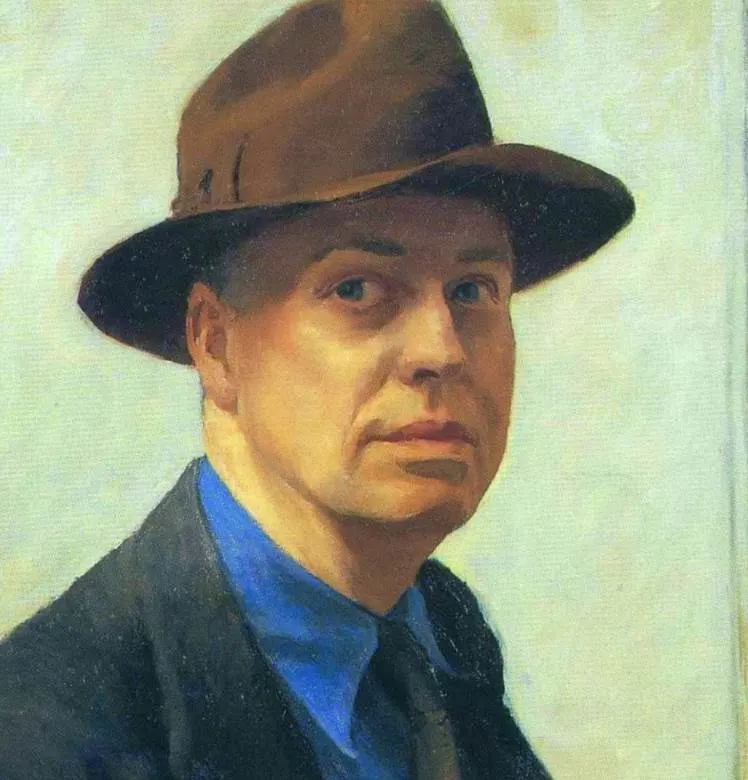
4. Did the depicted diner exist?
Edward Hopper was a secretive man and he didn’t reveal a lot about this particular painting as well. He only mentioned that “it was suggested by a restaurant on Greenwich Avenue where two streets meet.”
That’s not exactly a detailed description. What made things worse is that he also mentioned that he “simplified the scene a lot and that he made the diner much bigger than it was.”
Despite this inaccurate description of the diner, the location was pinpointed to a place near Mulry Square, about 7 blocks west of where the artist lived at the time.

The square looks completely different today, and we can only assume that there probably never really was a diner that looks exactly like the one in the painting.
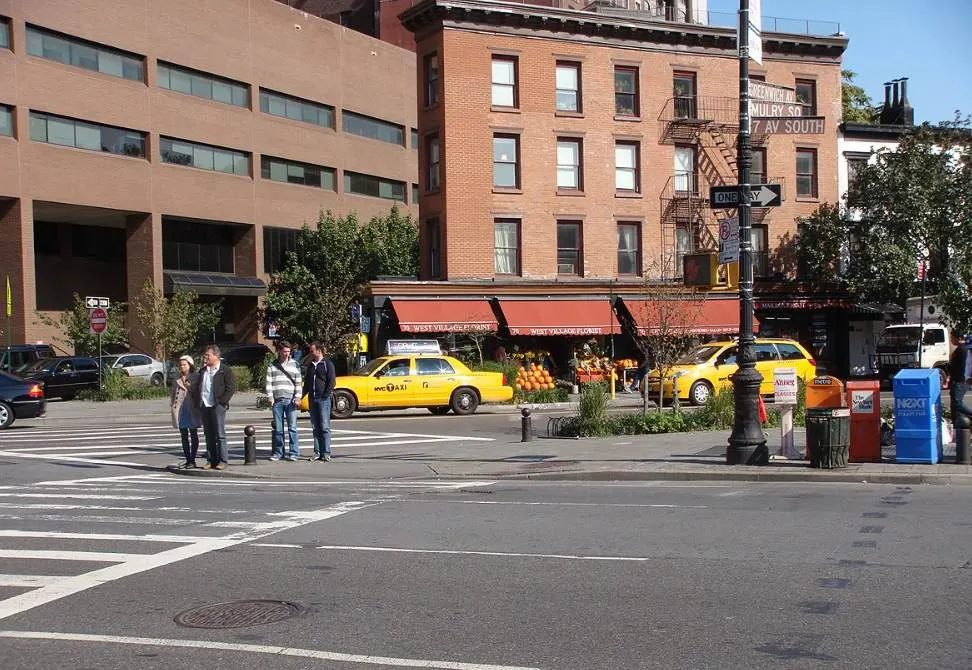
5. Hopper fetched a good amount but it didn’t make him rich
Hopper’s wife loved this painting and they instantly put it on display at Rehn’s, the art gallery he normally put his paintings for sale.
It didn’t take long before somebody bought the work as it only stayed here for a month. Josephine was a great socialized and she managed to convince the director of the Art Institute of Chicago, a man named Daniel Catton Rich, to come and take a look.
Rich was organizing an event at the MoMA at the time. He visited Rehn’s shortly after and instantly purchased the work for $3,000.
While this is the equivalent of nearly $50,000 today and a handsome amount at the time, the painting is worth substantially more today.
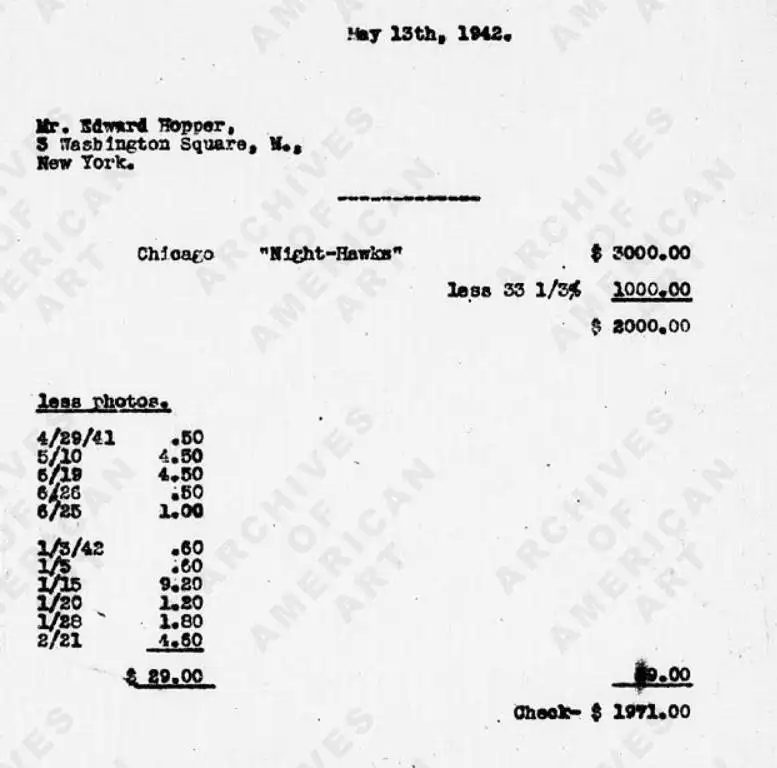
6. The painting has been featured in films, television series, and other media
The main reason why the painting’s sale price upon completion is just a fraction of what it’s worth today is that it has been featured numerous times in various forms of media.
The famous movie director Ridley Scott mentioned that the gloomy atmosphere in his epic “Blade Runner” (1982) was inspired by Nighthawks.
It has also been directly replicated in television series, including in a Simpson’s episode called “Homer vs. the Eighteenth Amendment” (1997).
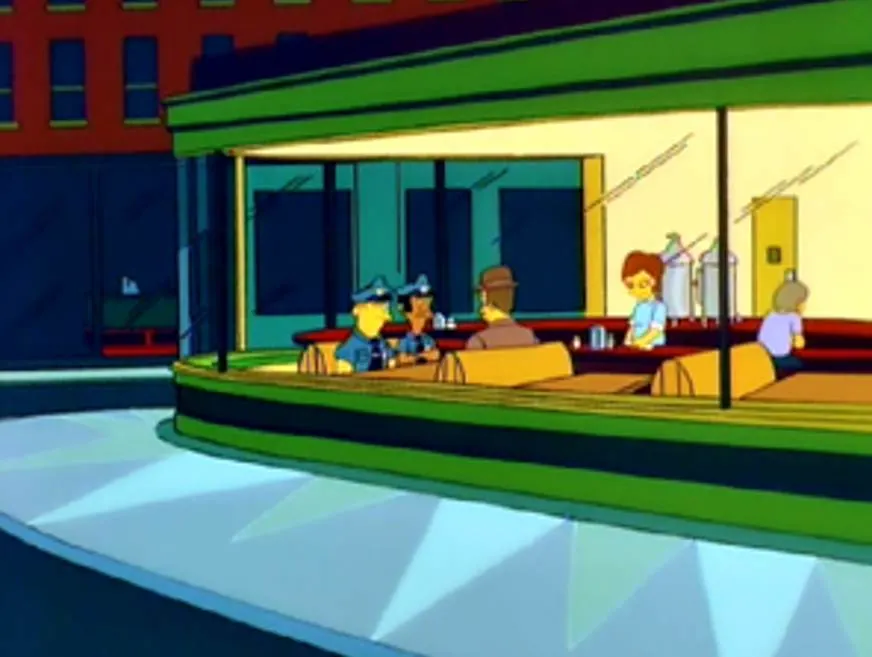
7. How big is Nighthawks by Edward Hopper?
Edward Hopper didn’t become world-famous because of his monumental works of art, that’s for sure. Nighthawks is even one of his larger works as he focused on portraying incredibly realistic scenes.
This oil on canvas painting has dimensions of 84.1 × 152.4 centimeters (33.1 x 60 inches).
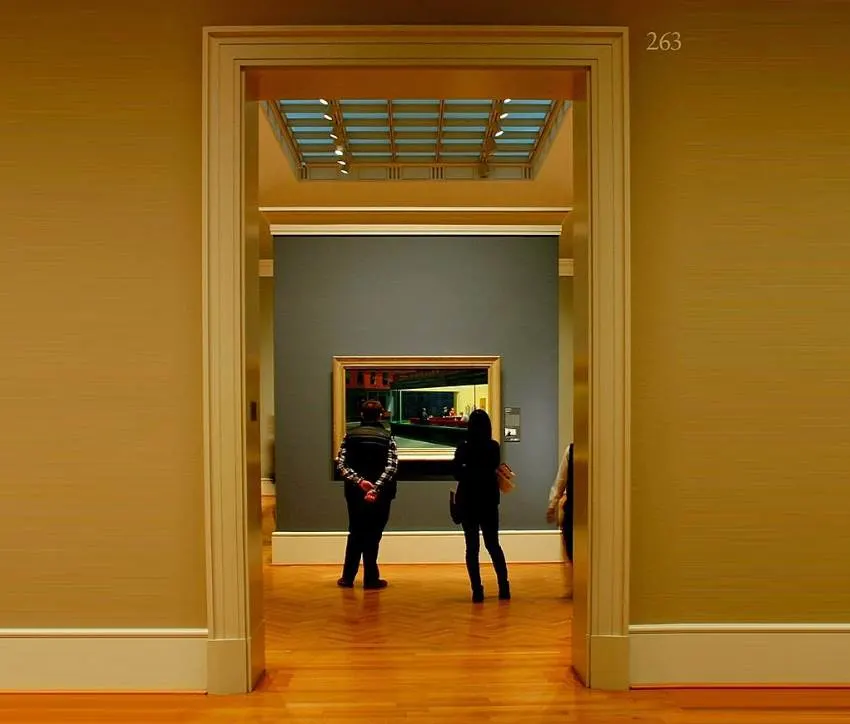
8. Where is the painting located today?
Daniel Catton Rich, the director of the most popular museum in Chicago, knew that he could make an amazing deal by purchasing this painting. He quickly got the $3,000 asking price together so he could bring it back to Chicago.
He referred to the painting as “fine as a Homer,” a reference to another famous American artist named Winslow Homer (1836-1910), a landscape artist who produced equally realistic paintings.
If you want to admire Nighthawks by Edward Hopper, then you have to visit the Art Institute of Chicago as the painting has been on public display in this museum ever since.

